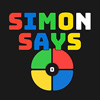Village News
Running and Relaxing
Recently my friend shared some of the things people say when he tells them he’s a curator and works at a museum. Among the many reactions, he said, people have commented, “Oh! Working in a museum must be so relaxing!” Anyone who works at a museum and was within earshot of this comment chuckled knowingly. Relaxing? Well, we hope that our visitors feel at home and, in a way, that their visits to our museums are relaxing, but this is likely not how any museum professional I know would answer.
In Steinbach I often encounter people who ask, with a puzzled look on their faces, “So what do you do all winter when the museum is closed?” There are a few ways to answer this question and the first is from the perspective of the big picture. I assure the person that the museum is in fact open all year round – only the heritage buildings in the village are closed up for the winter. But then there’s the more specific answer. What do I do all winter? While it isn’t visible to the public, behind the scenes, the busiest time of year for the curatorial department is exactly when it would seem we should be right in the middle of all that ‘relaxing’ that some suppose takes place for curators!
From January to June, me and Assistant Curator, Jenna Klassen, live with a foot in two worlds: we continue to promote and tend to our current exhibit, The Art of Mennonite Clocks, on display in the Gerhard Ens Gallery until April 2019, while at the same time turning our attention to our next exhibit, The Russländer, set to open in May. The beginning stages of exhibit development always begin in June of the previous year with selecting the exhibit topic, figuring out how we’ll tell the story, writing grant applications, and drafting the exhibit budget. So, in a way, we have been planning for this new exhibit for over six months now; however, writing the actual exhibit content, selecting photos for the panels, working with the graphic designer, choosing artefacts that will highlight the exhibit themes, and writing labels for every object, truly begins in January.
From the day we start this process in January up to, and often including, the day we open the exhibit in spring, it is like a race. When the unexpected happens, as it inevitably does, it often seems unclear of how, exactly, we’ll make it to the finish line. But then, life is full of mysteries and sometimes you need to embrace them! To continue with the metaphor of a race, while we’re running the last hundred meters of the competition, we need to divide our attention once more to look ahead to the coming year.
In this way, a good portion of our year feels like it’s spent running, but what about the relaxing? This is something that, I think, can be woven into the very fabric of the work that I do, if I can remember to pause to appreciate it. One of the things I think I’m most privileged in is that my job comes with unfettered access to the outdoor village and its heritage buildings. These buildings come with enormous challenges of their own as they need constant care, maintenance, resources, and planning for the next major restoration project. But when the running gets too tiring, these historic buildings also provide a shelter and a touchstone to remind me why I do what I do and why I run so hard in the first place. Stopping to take a breath when you’re in the middle of running a race is perhaps a hard lesson to learn, and one we all probably need to learn over and over. But that’s part of what makes MHV so special: if I stop to listen and take a moment to walk through the village and consider the history that is present there, I do slowly learn the lesson that the relaxing is just part of the running, and that the running is only meaningful because it’s a small part of something so much larger.




